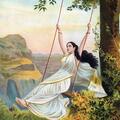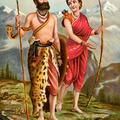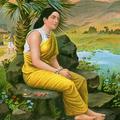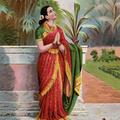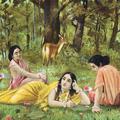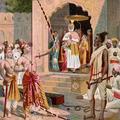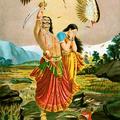Damayanti
Damayanti was the wife of Nala, the king of Nishadha Kingdom
[Original caption] Being separated from her husband Nala, the fair Damayanti enters her fathers place, yet feeling deeply for her husband, she is represented as sitting in a moon light, her



